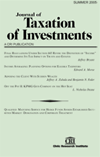Deferred Forward and Reverse Exchanges of Real Estate
Author: Ross Bengel.; George A. Dasaro.; Sudha Krishnan.
Source: Volume 23, Number 02, Winter 2006 , pp.115-136(22)

< previous article |next article > |return to table of contents
Abstract:
The real estate boom of recent years has again brought into investor focus the benefits of like-kind exchanges. The major advantage of Section 1031 to investors is deferral of income tax upon disposition of property. If the property that is being acquired is like-kind to the property being transferred, it is viewed for tax purposes as a continuation of the investment in the relinquished property. Taxability of any gain realized is postponed until the replacement property is sold. There is no limit to the number of times a property can be exchanged. It is possible that gain with respect to real property can completely escape federal income tax. Corporations and other entities with continuity of life can repeatedly use Section 1031 to avoid recognizing gain on a property. If an individual taxpayer holds the property until death, any income tax liability is eliminated and the real property is transferred to the heirs at a stepped-up basis.Keywords:
Affiliations:
1: Loyola Marymount University; 2: Loyola Marymount University; 3: Loyola Marymount University.